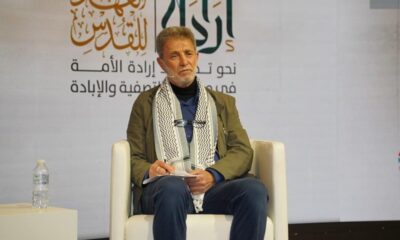WEST BANK, (The Palestine Foundation Pakistan)
The Israeli authorities intend to confiscate roughly 1800 dunums of privately owned land in the northern West Bank, claiming the move is part of plans to develop the archaeological site of Sebastia. The step would seize wide swaths of olive groves belonging to residents of the towns of Sebastia and Burqa, while giving local landowners only 14 days to file objections.
According to a report published Thursday by Haaretz, the new military order covers the archaeological site itself as well as extensive surrounding farmland containing thousands of olive trees. It is considered the largest confiscation order issued for archaeological purposes since 1967.
The newspaper noted that the last major confiscation of this kind in the West Bank took place at the Susya site in 1985, when 286 dunums were seized. At that time, the Israeli authorities “allowed residents to enter the site after they were expelled from it.”
Israeli archaeologists link Tel Sebastia to what they describe as the biblical city of Samaria, associated with the Kingdom of Israel during the 8th and 9th centuries BCE. The site contains Roman, Byzantine, and Islamic archaeological layers. Many residents of the town rely on economic activity connected to the site, including restaurants, tourist shops, and services for visitors.
In May 2023, the Israeli government allocated 30 shekels for excavations and development in Sebastia. At the same time, it began restoration work at the old railway station in the town, a station that in 1974 served as the launching point for settlement activity in the area when settlers barricaded themselves inside demanding the establishment of a settlement. Plans also include carving out a new road leading directly to the site “without passing through the Palestinian village.”
On November 18, the Palestinian Authority’s Wall and Settlement Resistance Commission revealed that the Israeli occupation authorities intended to seize a total of 4600 dunums of land belonging to the towns of Sebastia and Burqa northwest of Nablus, through an expropriation order numbered 2/25 targeting the archaeological site.
The commission explained that the announcement follows a series of military orders issued two months earlier, covering 63 archaeological sites across the governorates of Nablus, Ramallah, and Salfit, signaling a deliberate strategic expansion aimed at controlling archaeological sites and their surrounding geography.
The new order would carve out nearly eighteen hundred dunums from the lands of Sebastia, around 40% of the town’s land area, placing them under the authority of the Israeli Antiquities Department, supervised by officers from the Israeli Civil Administration and antiquities officials belonging to the Israeli army.
The left-wing Israeli organization Peace Now stated that the Israeli authorities continue to violate Palestinian rights and confiscate thousands of dunmus in contravention of international law, while entrenching themselves in the northern West Bank, where a small number of settlers live among more than a million Palestinians. The group added that Sebastia is a heritage site inside a Palestinian village and part of a future Palestinian state, and that Israeli greed harms not only the landowners but also the possibility of achieving a solution that respects both peoples, their rights, and their heritage.
For its part, the Israeli archaeologists’ organization Emek Shaveh said the Israeli government is “investing, under the guise of heritage protection, tens of millions of shekels to turn archaeological sites into tools for displacement and annexation.” It noted that “the intention to confiscate private land has nothing to do with preservation and aims instead to establish a tourist settlement that uproots Sebastia’s heritage from its own town while reshaping the area through tourism.”
The office of the Coordinator of Government Activities in the Territories responded by saying: “Following political directives, the Civil Administration has notified landowners in the Sebastia archaeological site of the start of a temporary land-seizure process for the purpose of preserving the site, facilitating visitor access, and developing the location.” It added that the measure came “against the backdrop of the site’s neglect and the failure of landowners and the Palestinian Authority to address damage there, contrary to the interim-phase agreements.”
Sebastia’s history dates back to the Bronze Age, when early peoples, believed to be Canaanite tribes, inhabited the area. The town contains numerous surviving archaeological landmarks, including the western gate, the colonnaded street, the central plaza, the Roman amphitheater, the Greek tower, the Temple of Augustus, the palace of King Omri, the Church of John the Baptist, the Greek stadium, and the Temple of Kore.











